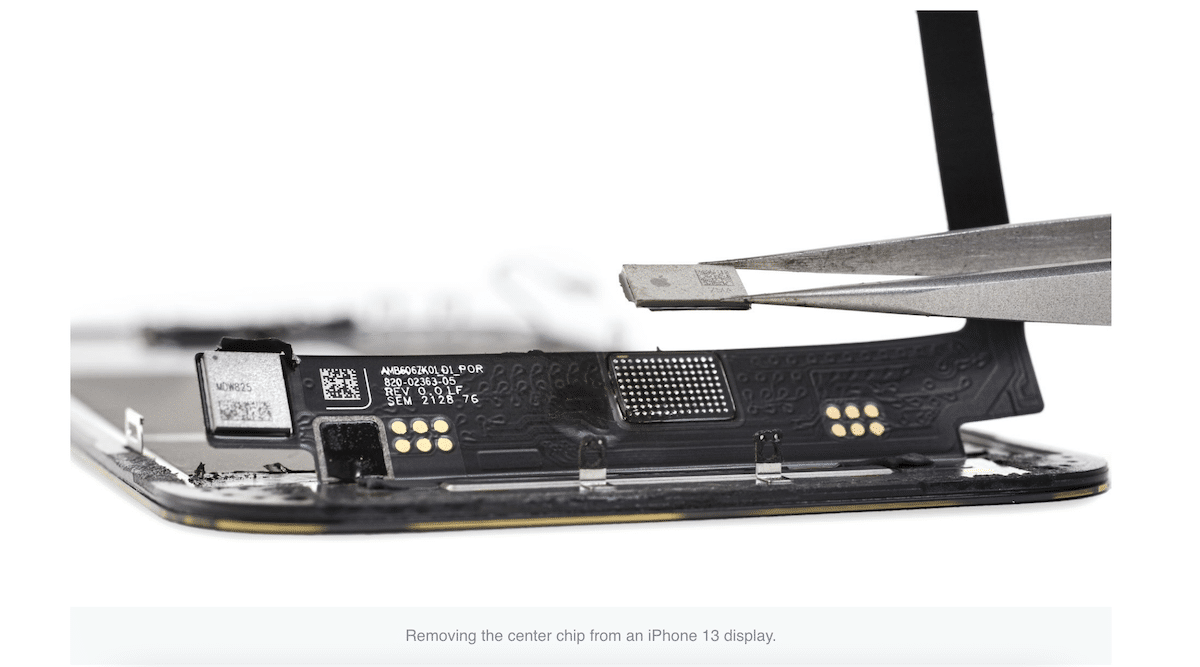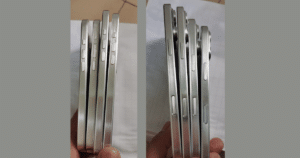Although expanding its independent repair program, Apple keeps on introducing new hurdles for independent repair providers. Right to Repair activists warn against Apple’s latest speed bump introduced in the iPhone 13 series which makes DYI or third-party repair of iPhone 13’s damaged screens, nearly impossible.
Apple is using a new serialization system in the iPhone 13 series which marks pairs each display unit with its respective device by scolding a small microcontroller into the bottom of the screen. When an original screen is replaced with another, that renders the FaceID functionality invalid.

iFixit writes that “replacing an iPhone 13’s screen with the same exact screen from an identical brand new iPhone gives this error: “Unable to activate Face ID on this iPhone.” And believes that Apple’s new serialization of the iPhone 13 can bring independent repair industry to extinction.
The Independent repair industry fears extinction because of Apple’s new strategy against the Right to Repair movement
iFixit explains that Apple has made it nearly impossible for users to self repair their damaged iPhone screens by placing a microcontroller in the screen of the iPhone 13 series. And third-party repair providers can only repair damaged iPhone 13 screens is by physically swapping the chip from one display unit to the other which is a risky and expensive process.
The iPhone 13 is paired to its screen using this small microcontroller, in a condition repair techs often call “serialization.” Apple has not provided a way for owners or independent shops to pair a new screen.
As screen repair is a major source of revenue for the independent repair industry, third-party service providers are left with four options.
Technicians are preparing for three immediate options: buy new equipment and retrain technicians for microsoldering work, join Apple’s “authorized” repair network (either AASP or the Independent Repair Program—both could be charitably described as “incredibly restrictive”), or find a new line of work. There is a fourth option, of course: fight like hell for the right to repair.

iFixit’s engineers presume that Apple’s deliberate efforts to block independent repair is the company’s strategy to push consumers to buy AppleCare and earn larger profits.
It’s hard to believe, after years of repair-blocking issues with Touch ID, batteries, and cameras, that Apple’s latest iPhone part lock-out is accidental. As far as our engineers can tell, keeping Face ID working on the iPhone 13 after a screen swap should be easier than ever, since its scanner is wholly separate from the display.
Technically, yes: Face ID failure could be a very specific hardware bug for one of the most commonly replaced components, one that somehow made it through testing, didn’t get fixed in a major software update, and just happens to lock out the kind of independent repair from which the company doesn’t profit.
More likely, though, is that this is a strategy, not an oversight. This situation makes AppleCare all but required for newer iPhones, unless you happen to know that your local repair shop is ready for the challenge. Or you simply plan to never drop your phone.
Therefore, the Right to Repair activist calls for collective action to pressurize legislators into passing the right to repair legislation as a safety net from Apple’s predatory and monopolistic behavior for the survival of repair shops in local communities.
Read More:


